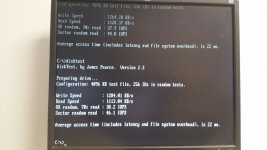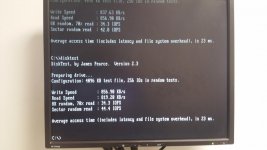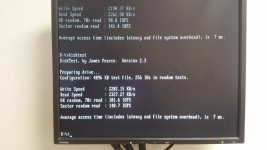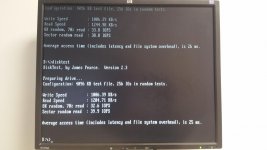Eudimorphodon
Veteran Member
Instead of going CF you could try going hog-wild with a full-on IDE-to-SATA converter and a real SATA SSD, I suppose, that would probably substantially outrun a CF card. They make convenient little "sleds" in the laptop 2.5" PATA drive form factor that can house an M2 or mSATA format drive "stick", conceivably you might be able to put one of those in a 286 with a 40-to-44 pin adapter and the combination can be really cheap, considering. (I recently upgraded an old PowerBook with a PATA-to-M2 sled fitted with a 128GB disk and the whole setup was less than $40.)
That said there's a really good chance you'll run into compatibility gotchyas. It's a known issue that many of those PATA-SATA converter chips have issues with DMA modes less than UDMA-33, I have *no idea* if there will be deal-breaker problems with the PIO ATA modes you'd actually be using on a 286. (And of course the other issue is you're unlikely to find an M2 or mSATA drive much smaller than 64 or 128GB, which to a 286 is an inconceivable amount of overkill.)
That said there's a really good chance you'll run into compatibility gotchyas. It's a known issue that many of those PATA-SATA converter chips have issues with DMA modes less than UDMA-33, I have *no idea* if there will be deal-breaker problems with the PIO ATA modes you'd actually be using on a 286. (And of course the other issue is you're unlikely to find an M2 or mSATA drive much smaller than 64 or 128GB, which to a 286 is an inconceivable amount of overkill.)







